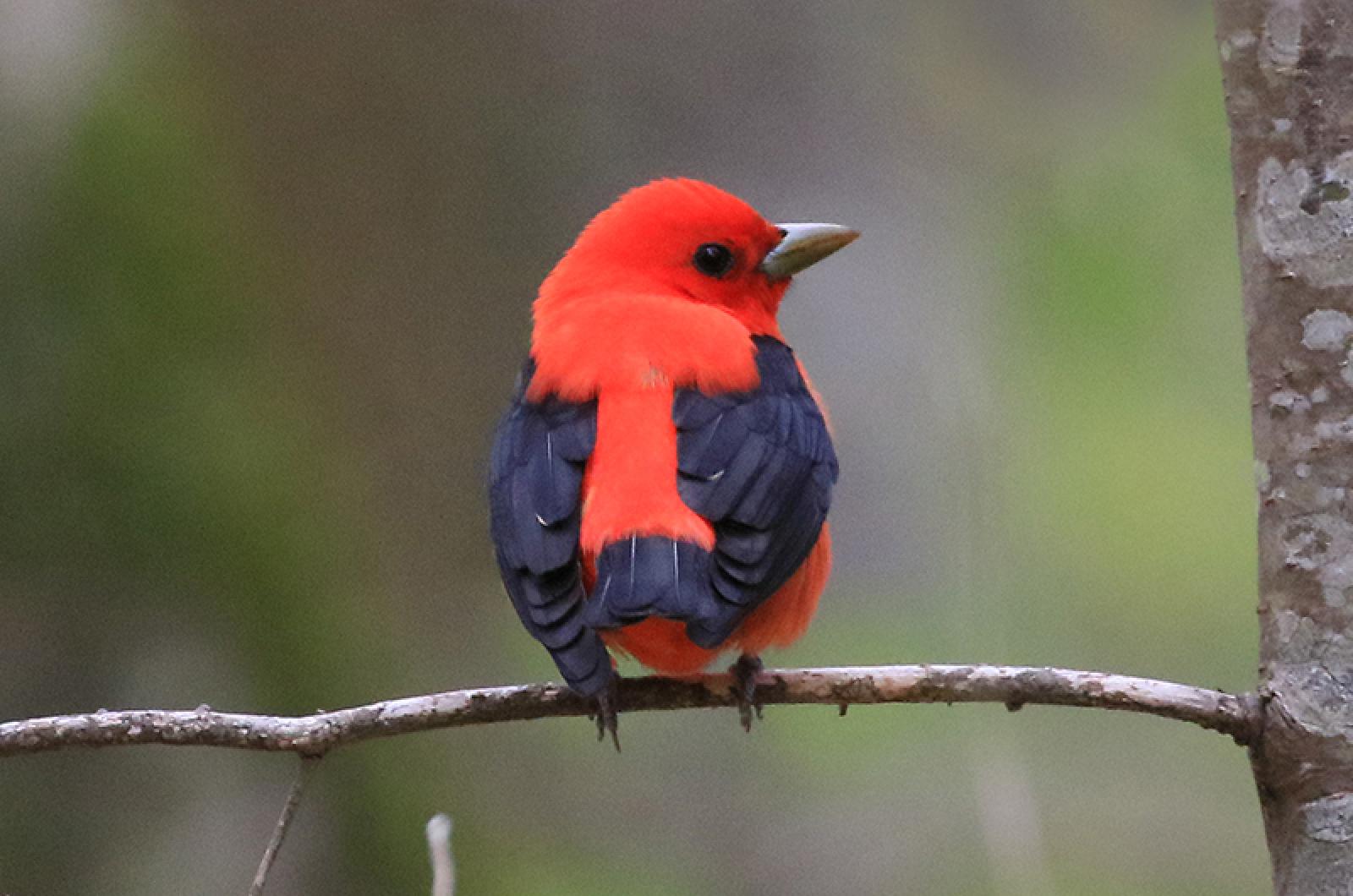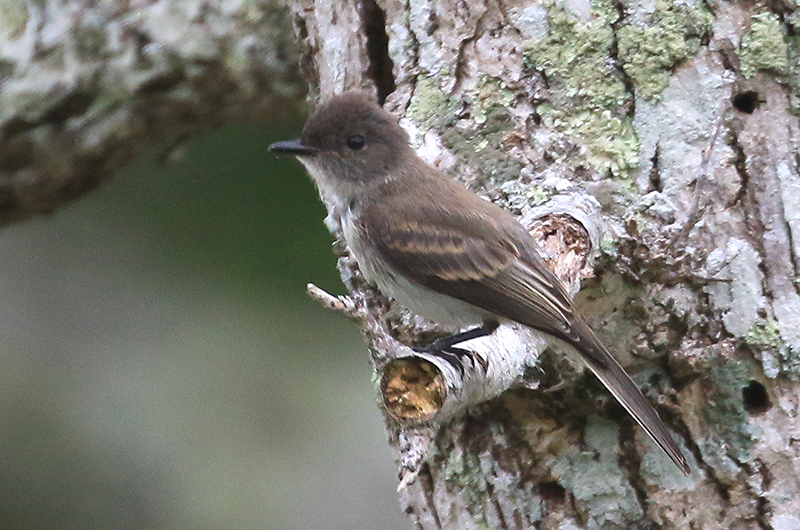Our attention shifts to songbirds powering southeastward in September. You will be reading more about up-Island sites like the Gay Head Cliffs, Gay Head Moraine and numerous sites along the north shore, although the migrants can be found anywhere. Up-island sites tend to host larger numbers as they head westward toward New York and New Jersey.
Included in this wave of songbirds will be some less-than-common species. Matt Pelikan reported an early western kingbird at Wasque on August 16, and on Sept. 2 he found an olive-sided flycatcher at Menemsha Hills. The latter species is less common and there are numerous years when they are not seen.
The Gay Head Cliffs reporting begins with Pete Gilmore, Andrew Feller and Allan Keith, who found house wrens, prairie warblers, eastern screech owls, northern parula, black-and-white warblers, and a sharp-shinned hawk. At the Gay Head Moraine they added ovenbird and scarlet tanager.
Sarah Mayhew found prairie and pine warblers at Nat’s Farm on August 30, and a northern parula at the Chilmark cemetery the same day. An ovenbird was at Nat’s Farm on August 27. Also on August 30, Kath MayWaite visited Pecoy Point and found a phoebe and a pine warbler.
Ruby-throated hummingbirds are still abundant. Charlie Kernick has six of them visiting his feeder as of Sept. 1, while Sarah Mayhew has at least two, Sande Weinstein still has one, Mary Makepeace has four, Les Cutler had six to eight of them as of August 30 but there were only two to three of them on August 31 and Sept. 1. Their numbers will continue to decrease, but they also seem to be lingering here later into the season.
Bird Sightings
Felix Neck continues to produce a variety of wading birds. The most recent sighting is of a glossy ibis, a two-foot tall purplish bird with a long down-curved beak. Davis Coniff and Jacob Gurney, Fern and Feather camp counselors, were the first to report it on August 28. As of August 31, Steve Allen, David Padullo and the Felix Neck early birders have seen this bird. The early birders group also spotted nine great egrets, a snowy egret and three great blue herons.
Gloria Jean Buettner saw a flock of sanderlings that were chasing the waves in and out at Norton Point on August 29. They feed on the critters in the wet sand between the waves. Occasionally, they get caught by the waves and need to take flight.
Another new species for the season is the American golden plover, which Jeff Bernier spotted within a flock of black-bellied plovers in a Katama agricultural field on Sept. 1. The goldens are one of the few species that continue their southeastward migration out over the ocean until they encounter the northeast trades that then carry them into the Caribbean or South America. Stuart Santos was there earlier in the day and there were no goldens but he counted seven black-bellied plovers, seven killdeer and a bunch of semipalmated plovers.
Anne Carmichael Whiting observed a feeding frenzy of terns and gulls at the north end of Sengekontacket Pond near Farm Neck’s fourth hole on Sept. 1. There were lots of bait fish for them to catch and eat. Laughing gulls will often participate in feeding frenzies. On the afternoon of August 29, Sarah Mayhew observed laughing gulls flying erratically above the water as they chased down a hatch of flying bugs (ants probably) instead of fish. Judy McConnell found 25 to 30 laughing gulls on a floating dock on August 26. She said she had “never seen anything like it before in 30 years.”
Other shorebirds seen recently include Jeff Bernier’s sightings of black-crowned night-herons, least sandpipers and lesser yellowlegs on Edgartown Great Pond on Sept. 1. Pete Gilmore visited Sepiessa on August 29 and found several semipalmated plovers and least sandpipers, 60-plus semipalmated sandpipers, three lesser yellowlegs, and two white-rumped sandpipers. Spotted sandpipers have been unusually abundant these past six weeks or so. Gus Ben David still has two to three of them visiting the ponds in his yard every day.
Black skimmers, a perennial favorite of most birders, have left their nesting colony at Little Beach as I did not see any on Sept. 1. Jeff Bernier reports that they have moved to Sarson’s Island and Matt Pelikan counted 15 of them there. The rest of the skimmers have probably already left for southern climes.
Last week’s report of a bald blue jay at Stan and Marie Mercer’s Chilmark feeders was unusual, but Gus Ben David advises that some blue jays and cardinals naturally molt all their head feathers at one time rather than molting one or two feathers at a time. It is neither a disease nor feather lice, but an “absolutely normal avian physiology.”
Finally, the Carolina wrens are still singing every day in my yard. Maybe they are nesting again — for the fourth or fifth time?
Southbound migrants are showing up frequently now. Please report your sightings to birds@mvgazette.com.
Robert Culbert is an ecological consultant with Nature Watch LLC living in Vineyard Haven.







Comments
Comment policy »